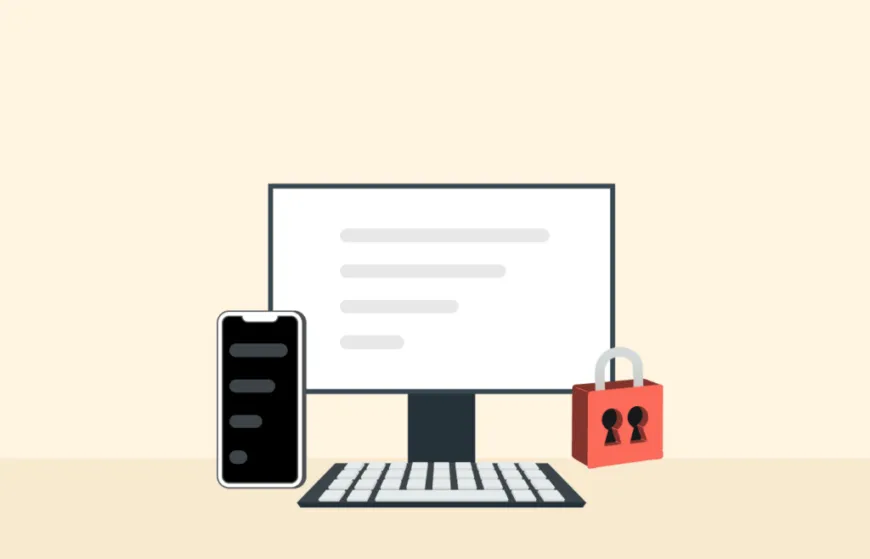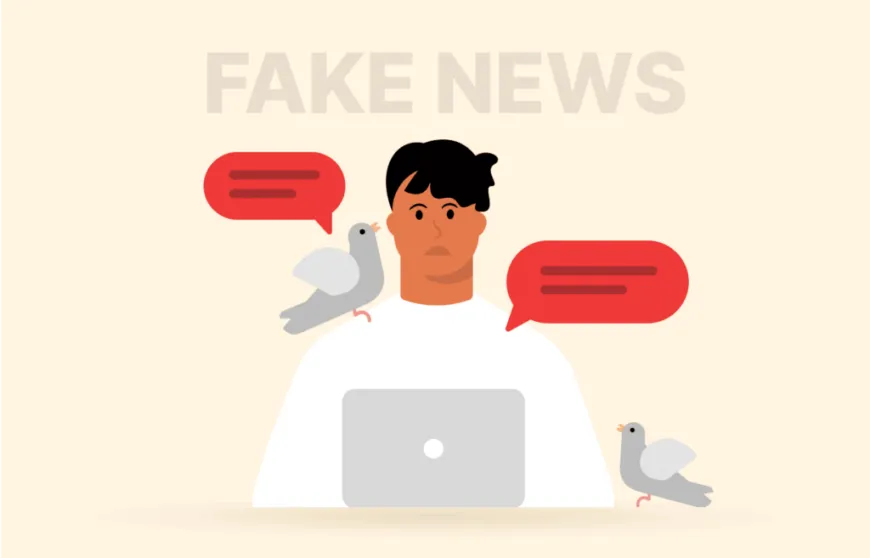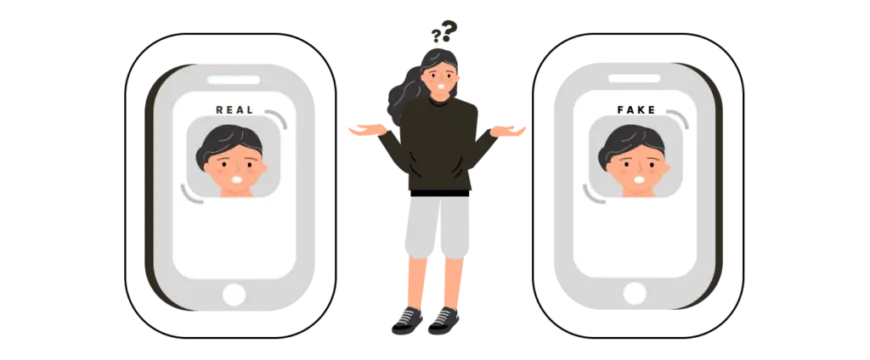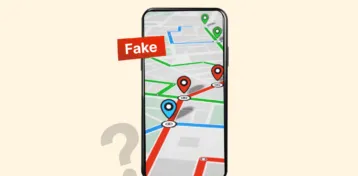
Perfect replication has been a holy grail of sorts for Sci-Fi for decades. Think about Star Trek’s replicator devices which can reproduce anything from food to tools, except for latinum, which is why it’s the galaxy’s currency. Or the T-1000 robot in the Terminator franchise can adapt its shape to look like any person. Well, digital technology’s current state of the art is getting close to perfect replication, at least when it comes to digital media. So now we have a new technological item, the “deepfake .”It’s a piece of media altered to look and sound like anybody, dead or alive. So the future is here, and it’s not always good news.
What is a Deepfakes?
Deepfake is a piece of digital media. Videos are the most popular kind that is engineered to look genuine.
Deepfakes come courtesy of our most advanced artificial intelligence and machine learning technologies. These cutting-edge tools allow the manipulation of video and audio that come close to the real thing. Very close indeed.
Look at this example below. It features a false Mark Zuckerberg (of Facebook fame) in which he uttered a few words worthy of a Bond villain — even referencing Spectre.
This one still looks a little rough on the edges, so you can tell it’s fake if you look carefully enough. But improvements are inevitable.
Making a deepfake is still a challenging task. First, the AI needs a previously trained neural network, and the training process needs enormous datasets comprised of thousands of images. Then, you need specialized software. After that, you need to do the same with the voice, which is much easier, and then mix the video and the audio so that the lips and the voice are synced.
How do deepfakes work?
Deepfakes work by mimicking the speech patterns and behavior of a target person. They use advanced technology where a deep learning system is trained to copy the movement and expression of the target person from different angles.
The model is then taken through the generative adversarial networks (GANs) process that detects forgery and flaws for improvement. After a series of improvements in the GANs process, the end product is a persuasive counterfeit video that can effectively spread fake news and influence social, economic, and technological activities.
In some cases, powerful politicians appeared in inappropriate deepfake videos when their competitors wanted to settle a political score.
History of deepfake AI technology

The deepfake idea started with photo manipulation using tools like Adobe Photoshop. It later advanced and became a reality in the mid-2010s when sophisticated deep learning algorithms began developing owing to AI and machine learning technology, large data sets, and cheap computing power.
Deepfakes became more popular after the development of GAN technology in 2014. It detects flaws and forgeries in a deepfake video indicating areas that need improvement. The epitome of the popularity of deepfake videos is in 2017 when an anonymous Reddit user with the username ‘deepfakes’ used the GAN tool to swap faces and release celebrity deepfake videos. They went viral on social media and raised more questions about controlling deepfakes. Tech giants like Microsoft, Google, and Facebook have invested heavily in deepfake detection. However, they face a big challenge because deepfake AI technology is rapidly advancing, and today, people are creating even more convincing deepfakes than before.
Who is using deepfakes?
You’d be amazed at the number of deepfakes circulating the internet since they’re so hard to make. But Facebook was able to collect about 1,00,000 of them in June 2020. The social network giant used the collection to develop and train an algorithm to detect deepfakes.
The large number of deepfakes already around suggests that they are becoming increasingly more accessible and cheaper. So as more people become able to make them, their uses will also increase for both good and bad things. So let’s see how they are being used so far.
1. Fake news
Ironically, in our “information age,” fake news is disruptive due to its prevalence and influence over the public. Deepfakes help them make them more credible than ever, so deepfakes are the perfect propaganda tool. They promise to be the ultimate voting manipulation device soon.
There was concern among specialists over the 2020 election. The fear was that deepfakes could swing the election; however, it didn’t happen. But that was not due to a lack of attempts, but because two years ago, the available technology was not advanced enough to develop deepfakes that looked genuine. However, this will change soon enough, and we could find an election in which fake news based on deepfakes could make all the difference.
2. Cybercrime
New technology always brings about new solutions — and that includes crime. The recent trend in deepfakes could bring online criminality to a new level.
Blackmail is one of the cybercriminal’s most popular devices, and deepfakes can help them force people to do whatever they want. Imagine all the cybercrime types you already know, from phishing to sextortion. Then add the deepfake factor in. It will charge them with digital steroids and make them scarier and more effective than ever.
Then, consider that this technology will become more available as time advances. So it will become a standard tool for social engineering (which is already one of the most effective cybercriminal techniques). Social engineering relies on human emotion as the weakest link in the digital security chain, manipulating a person’s behavior to make them do something they would usually avoid.
3. Sextortion
Sextortion is a type of scam in which a criminal comes into possession of sexually explicit material involving the victim. Then, those videos or pictures enable them to blackmail the victim into various things, from paying money to keep it private to sending them even more compromising media.
The threat is essential here because these scams are often nothing but a bluff, but the fear they induce is real.
Deepfaking can turn a bluff into an actual threat, allowing the scammers to create compromising images or videos about things the victim never did or filmed.
Even if the victim knows that the video is fake, they could agree to the blackmail if it looks real enough. And it’s going to look perfectly real in time.
4. Revenge porn and phishing
One can use the same deepfake technique for a new brand of phishing attacks. The phishers can impersonate somebody else to persuade new victims into action. For example, they could look and sound like your boss, father, or anybody else. Then, they will ask you to do something for them.
It’s happened already. In 2019, a British CEO sent a quarter million USD to a scammer who faked the voice of his parent company’s CEO in a phone call. The alleged boss asked for the money, so the employee complied. Everything seems to point to a deepfaked voice.
Of course, revenge porn will see its fair share of deepfakes in the future, which is particularly harmful to females.
5. Sockpuppets
There are thousands of pseudo-accounts created using deepfake photographs. Anonymous users generate deepfake non-existent photos with prominent people and use fictional names with the intention of hiding their identity.
The users then actively engage in forums and discussions where they incite people with propaganda. Others use the accounts to dupe unsuspecting users to lure them into online scams.
6. Social media
Deepfakes became popular on social media a few years ago, with people using deepfake apps to swap the faces of characters in movies and TV shows for their own and share them with their followers. However, it raised privacy issues due to the intrusive nature of these applications. There are many applications on social media you can use to create deepfake content. A good example is the Chinese deepfake app, Zoa.
7. Acting
There are possibilities for using deepfake AI to digitally alter or construct humans for acting purposes in the future. Some fans have already started using deepfake AI to edit existing videos by inserting and swapping faces and voices with their own.
Disney is also not left behind, and they are working on a high-resolution deepfake face-swapping technology. The model is currently undergoing progressive training to identify facial expressions and implement face-swapping.
Additionally, the model can generate media at 1024 x 1024 resolution, which is higher than the common 256 x 256 resolution. The move could end up cutting production and operation costs while improving quality.
8. Art
Deepfake AI technology can be used to generate the music of an existing artist. It can also copy popular artists’ drawing and painting styles and mimic their work.
9. Stock manipulation
Competitors or skewed investors can release deep fake videos about an organization to influence stock prices. For instance, they could release a deepfake video of the organization’s CEO making a positive statement about technological breakthroughs to raise the company’s stock. They could also release a video with damaging content to lower the company’s stock price.
10. Customer phone support
Different organizations use deepfake voices to handle customer queries. It gives feedback on straightforward queries such as checking account balances, giving instructions, or filing a complaint. This allows employees to handle more pressing matters while also improving efficiency.
Apps to make a Deepfake

The first software that made deepfake creation available to the general public was Zao App. It became restricted in many countries for obvious reasons, but you can still use it in some jurisdictions, like India.
Then, other developers also created tools that can produce deepfake videos, including:
- Wombo. It allows you to put faces into music videos and lip-sync them.
- DeepFaceLab. Microsoft’s program aims to help students and specialists to understand deepfaking better. But you can still use it to come up with your deepfakes. It’s much more sophisticated and harder to use. Hence, it requires an extensive data set to come up with the goods.
- Deepfakesweb. A browser app in which you can merge videos and pictures.
You will be reassured by looking at the currently available software for the general public. It’s far from producing a video that could pass for real. However, this is bound to change quickly, so learning how to protect yourself from deepfakes now is essential.
The technology required to develop deepfakes
Deepfake technology is rapidly advancing, and users are finding it easier to generate more accurate and convincing deepfake content. The following technologies are crucial to developing persuasive deepfake content.
- High-performance computing: Deepfakes require high computing power because of the high number of calculations and processes involved.
- Natural Language Processing: To mimic the target’s speech patterns, you need NLP algorithms.
- Autoencoders: They are responsible for mimicking the target’s attributes, such as body movements and facial expressions.
- Convolutional neural networks: Displays visual data related to body movement and facial expression.
- GAN Neural technology: Uses a discriminative algorithm to detect flaws in deepfake content resulting in a convincing end product.
Protecting yourself against deepfakes

Google released a depository of deepfake data to fight the deepfake marketplace. This information will help to create the technology that can counter a potential deepfake pandemic by detecting them correctly. Facebook is behind a similar project, too, holding a contest to encourage developers to create deepfake detection software. And Microsoft already has a tool.
Are Google’s, Facebook’s, and Microsoft’s anti-deepfake tools going to be enough to keep you safe? Maybe, but out of those three tools, only one exists, and it’s in its infancy. So taking precautions now is essential to remain safe in the future.
1. Sharing pictures with the public
We’re not going to decry the sharing of public images in general. However, more than a few pictures are needed to create the dataset to make a deepfake. That being said, it’s also evident that the more images you share online, the easier deepfaking target you become.
A good measure would be to make your social network accounts as private as possible. Encourage others to do so too.
Suppose you can limit the number of images featuring you that the public can download without restrictions. In that case, you will significantly reduce the chances of being the star of a deepfake video.
2. Device security
Choosing carefully the pictures you decide to share with the rest of the internet is essential, but you can also ensure that the devices that store your photographs are safe. A secured device will not leak your data (your videos and pictures, in this case). So use a good privacy VPN whenever you are online. The VPN will ensure your anonymity by assigning you a different IP address. Then a good anti-malware suite is helpful, especially on your mobile devices.
3. Seek help from the authorities
If a cybercrime involving deepfakes affects you directly, report the fakes to the social platform that hosts them. Also, go to your local authorities to make a formal complaint. The deepfakes can be a form of defamation, so you could also seek the help of your lawyer to learn about the options you have moving forward.
How to recognize a deepfake
There are a few ways to recognize a deepfake video, but it can be difficult to do so with complete accuracy. One way to tell if a video is a deepfake is to look for inconsistencies or abnormalities in the video. For example, the person’s face may appear to move unnaturally, or the background may be distorted.
Another way to tell if a video is a deepfake is to pay attention to the audio. In some cases, the audio of a deepfake video may be distorted or out of sync with the video.
Additionally, if the video seems too good to be true, or if it shows something that is highly unlikely or impossible, it may be a deepfake.
It’s critical to note that not all deepfake videos are easy to detect, and some may be very convincing. If you suspect a video is a deepfake, it’s always best to verify its authenticity before sharing it or drawing conclusions.
Famous examples of deepfakes
1. Dali lives
30 years after the death of the famous Salvador Dali, the Dali Museum in Florida used deepfake AI to recreate his lifelike, where visitors could interact with him. The amazing exhibit was dubbed ‘Dali Live,’ and it shows how deepfake technology has evolved over the last few years.
Several installations were mounted around the museum detailing his life and works, and each of them was incredibly lifelike.
2. Tom Cruise does magic tricks (2021)
Videos of the famous actor Tom Cruise sucking a lollipop, doing magic tricks, and playing golf went viral on social media platforms. The videos were not real, but deepfakes created by VFX artist Chris Ume to raise awareness about deepfake technology. Such videos show that anyone with the relevant software and knowledge can convince people with deepfake videos.
3. Alternative Christmas message (2020)
It is general practice in the UK for the monarch leader to convey a message of celebration and inspiration during Christmas. There are also alternative messages featured by UK Channel 4, where celebrities and comedians make jokes about the year.
Channel 4 created the queen’s deepfake video issuing an alternative message in 2020. The broadcasting channel later used the video to sensitize the public about the prevalence of deepfake technology.
4. Volodymyr Zelensky (2022)
During the Russian invasion of Ukraine in 2022, a deepfake video circulated on social media where Ukraine’s president told his soldiers to lay down their arms and surrender. Russian social media spread the video, but YouTube and Facebook later pulled it down.
The fake news was further spread by hackers who planted the deepfake video on the Ukraine 24 News station website and claimed that Zelensky had fled the country.
5. Kim Jong-un and Vladimir Putin (2020)
The nonpartisan advocacy group RepresentUs uploaded a deepfake video of Russian President Vladimir Putin and his North Korean counterpart Kim Jong-un on YouTube. Initially, the video was meant to air as a public commercial to sensitize the public to how the involvement of Russia and North Korea in US elections would greatly undermine their democracy. However, it had a comment at the end indicating it wasn’t real.
6. Nancy Pelosi (2019)
A deepfake video of Nancy Pelosi went viral on social media. The video altered Pelosi’s speech at the Center for American Progress by slowing down her voice to appear drunk. However, some analysts claim it was a shallowfake (a video manipulated with simple tools).
7. Donald Trump (2019)
Deepfakes (Reddit user) used NBC’S ‘The Tonight Show’ skit to create a deepfake video where he swapped Jimmy Fallon’s face for Donald Trump’s. The deepfake involved Donald Trump bragging to Obama about his primary win in Indiana. It was produced with comedy intentions, and although the face was Trump’s, the audio remained the same.
8. Barack Obama (2018)
Jordan Peele, an American actor, uploaded a deepfake video of President Obama on YouTube. In the video, Peele’s voice and face switch to Obama’s, and he starts hurling insults at Donald Trump. The video clearly indicates that deepfake technology can be lethal in the wrong hands.
Deepfakes and the future
Deepfakes are a new development in our cyber world. They can be a lot of fun. But they also enable cybercriminals to harm others severely.
Famous people are the most convenient victims for criminals because more pictures and videos are showing them around the internet and because their image can be more influential when the aim is to spread fake news. However, deepfakes can target anybody.
Prevention is key. Being mindful and critical about your online activities is the best way to avoid becoming a deepfaked individual. Another important measure is to protect your privacy and security. Use a VPN and set up your social media accounts to be as private as the platform allows.
So now you are aware. Deepfakes are there and will only become more frequent and credible in the future. But you can do plenty to prevent them from harming you.
What about shallowfakes?
Shallowfakes are doctored videos or pictures edited with simple tools. The videos can also be presented out of context, targeting an unsuspecting audience, mostly to damage the reputation of the target person. A good example is Nancy Pelosi’s slowed video that went viral on social media. Another example is UK’s conservative party’s edited TV interview to show labor MP Keir Starmer could answer a question about the party’s stance on Brexit. Shallowfakes are videos edited with simple tools, while deepfakes are generated using sophisticated artificial intelligence.
FAQs
A deepfake video is a multimedia item created with the help of artificial intelligence to fake a person’s appearance and voice. So far, deepfakes are funny things in which a celebrity does or says something ridiculous. But this technology can potentially become a powerful criminal tool for blackmail.
It takes a lot of work to answer this question accurately. This is because Deepfakes didn’t appear overnight but are the result of constantly advancing technology. As a result, the line dividing traditional video editing and AI-powered video editing is fuzzy. In reality, even the most advanced deepfakes use both methods. However, we can trace the appearance of the word “deepfake.” It happened on Reddit in 2017 as a username. So the first deepfakes appeared around that time too.
Several services allow users to create deepfakes. For instance, Deepfakesweb lets you create deepfake videos, but it’s not free to use. Depending on the length, a video will cost you from 5 to 75 USD. Wombo and DeepFaceLAb are other options. We do not condone the use of advanced technology for criminal purposes. However, remember that you could be sued for liability and extortion if you come up with a deepfake video and publish it.
The dangers of deepfakes lie in their potential to get misused for malicious purposes. That can include fabricating fake news or spreading misinformation. They can also aid in creating non-consensual pornographic imagery, a serious invasion of privacy. Additionally, bad actors can use deepfakes to create fake videos of people saying or doing things they never actually said or did.







